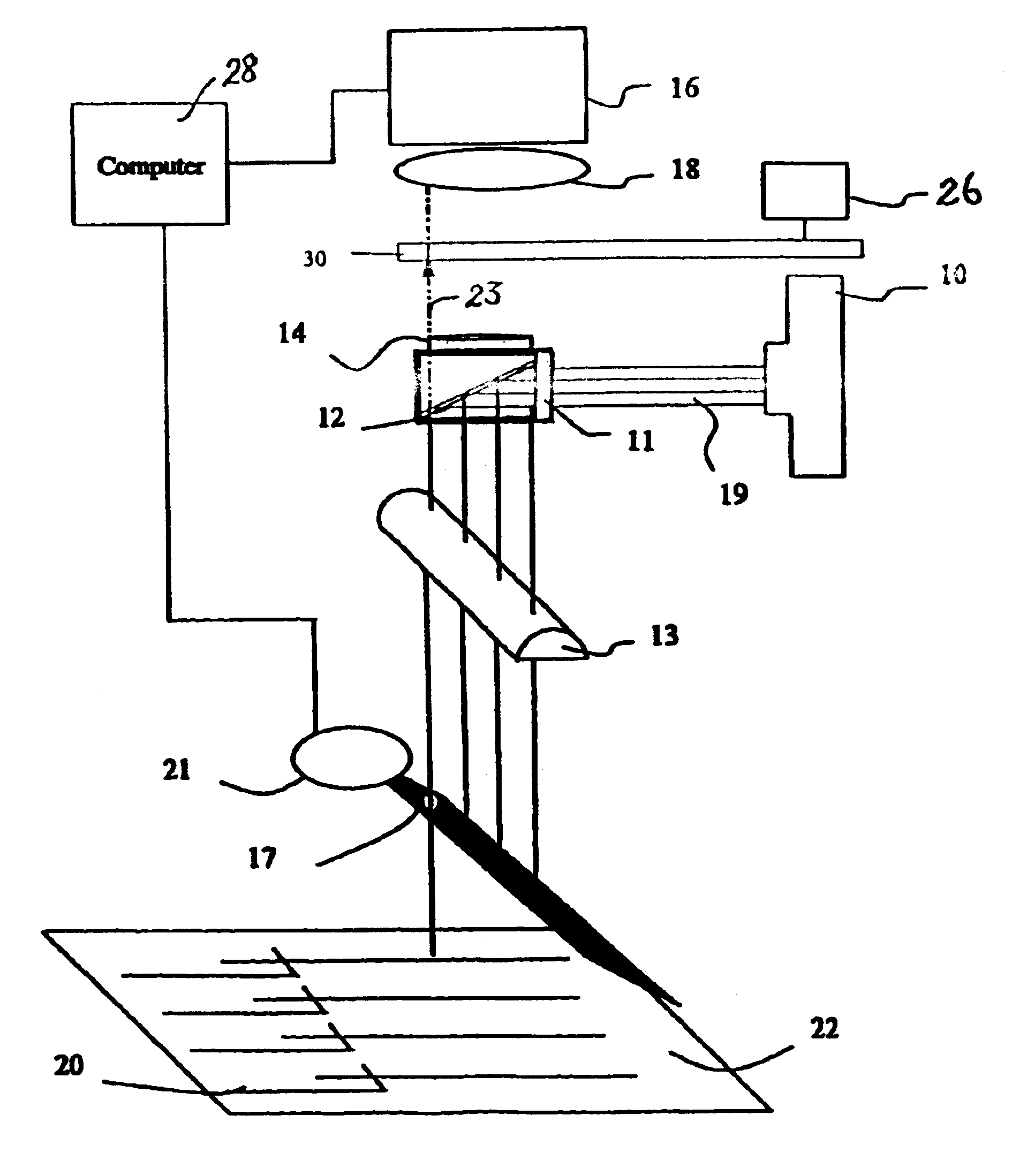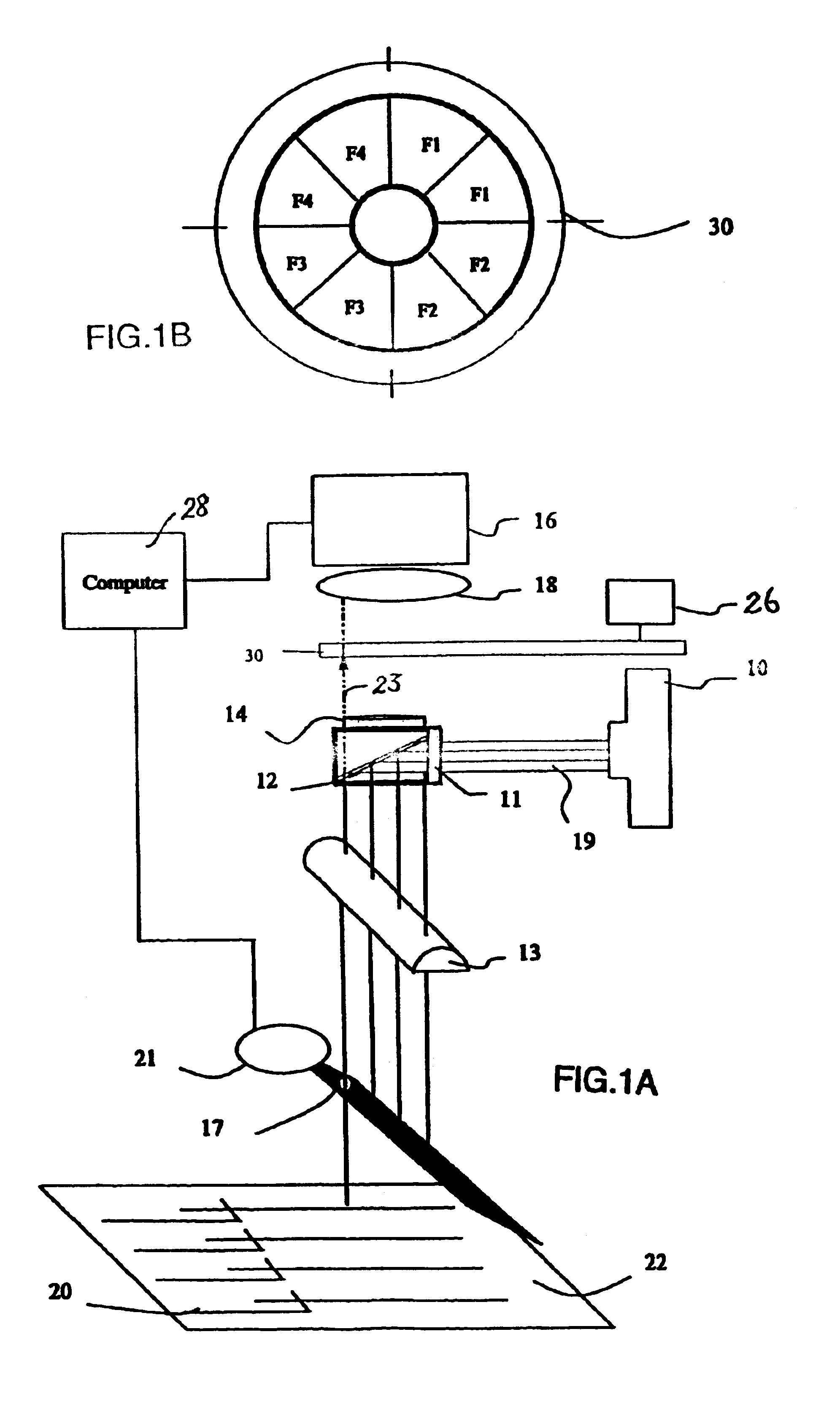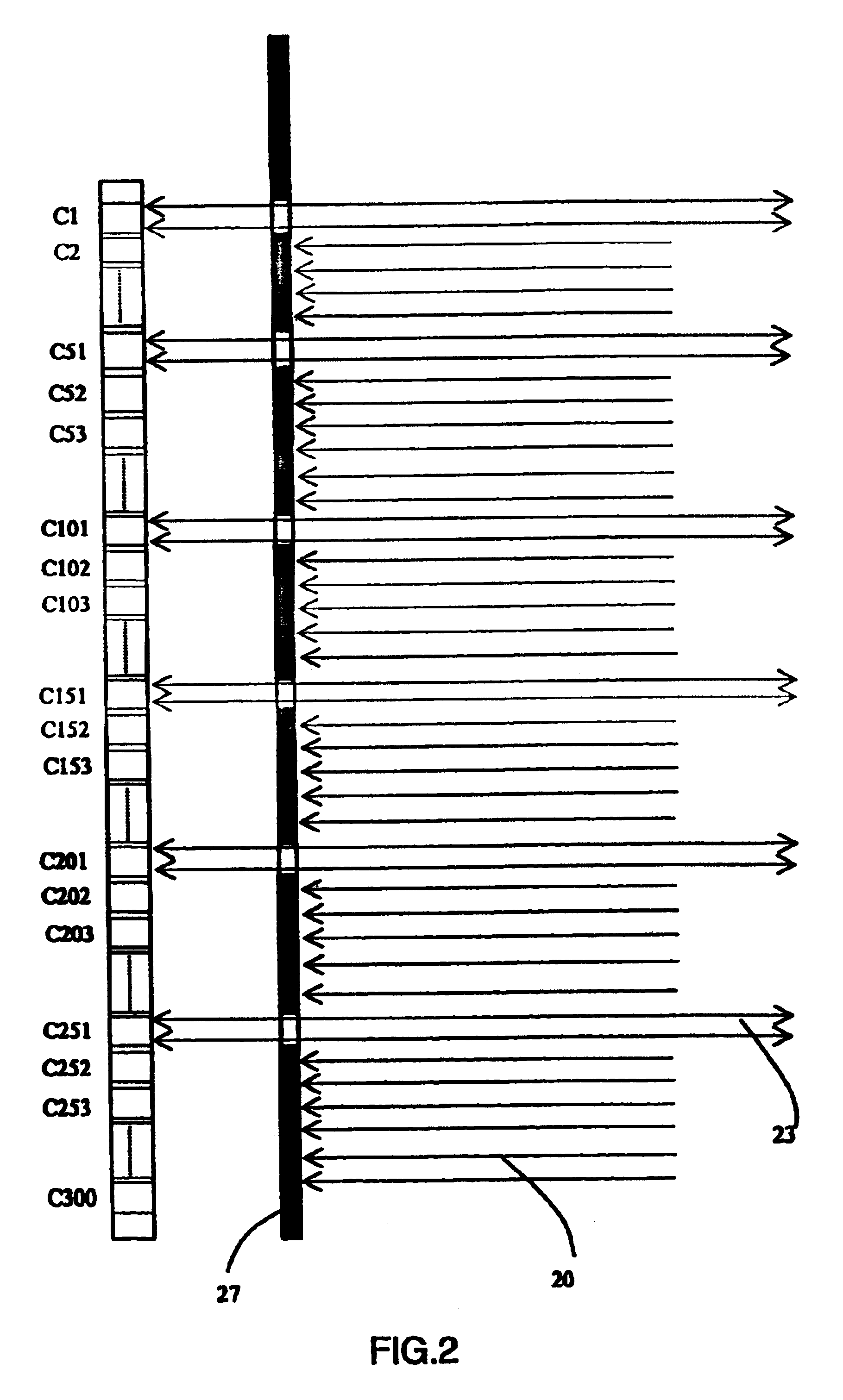Optical detection system
- Summary
- Abstract
- Description
- Claims
- Application Information
AI Technical Summary
Benefits of technology
Problems solved by technology
Method used
Image
Examples
Embodiment Construction
FIG. 1 is a general schematic illustration of the multichannel epifluorescent detection system using a moving pinhole. The system includes a radiation source 10, an interference filter 11, a dichroic beamsplitter 12, a convergent cylindrical rectangular lens 13, a long pass filter 14 and a photon detector 16. The source irradiates excitation light 19 to the dichroic beamsplitter 12 which is positioned at an angle (which is 45.degree.0 in this example) to the beam. This beamsplitter reflects radiation of wavelengths below the specified wavelength, acting as a long pass filter The reflected radiation is then directed axially to the sample channels 20. An interference filter 11 is preferably included in this embodiment to isolate the wavelength necessary for excitation of the fluorescent sample and at the same time eliminate the background scatter caused by the radiation of undesired wavelengths. The interference filter 11 is particularly essential to isolate the necessary excitation w...
PUM
 Login to View More
Login to View More Abstract
Description
Claims
Application Information
 Login to View More
Login to View More - R&D
- Intellectual Property
- Life Sciences
- Materials
- Tech Scout
- Unparalleled Data Quality
- Higher Quality Content
- 60% Fewer Hallucinations
Browse by: Latest US Patents, China's latest patents, Technical Efficacy Thesaurus, Application Domain, Technology Topic, Popular Technical Reports.
© 2025 PatSnap. All rights reserved.Legal|Privacy policy|Modern Slavery Act Transparency Statement|Sitemap|About US| Contact US: help@patsnap.com



